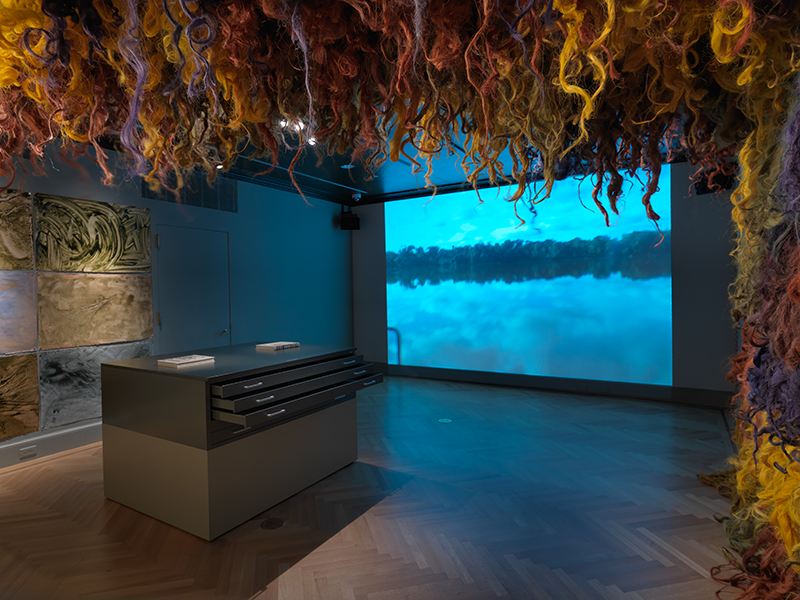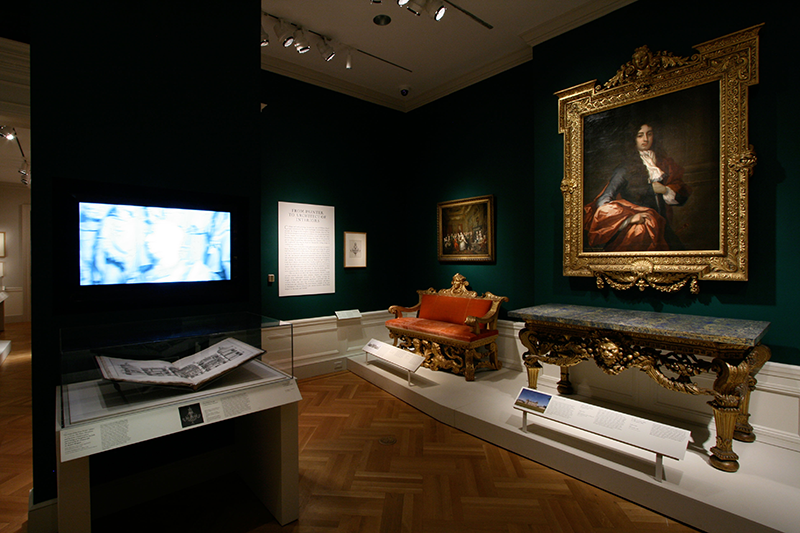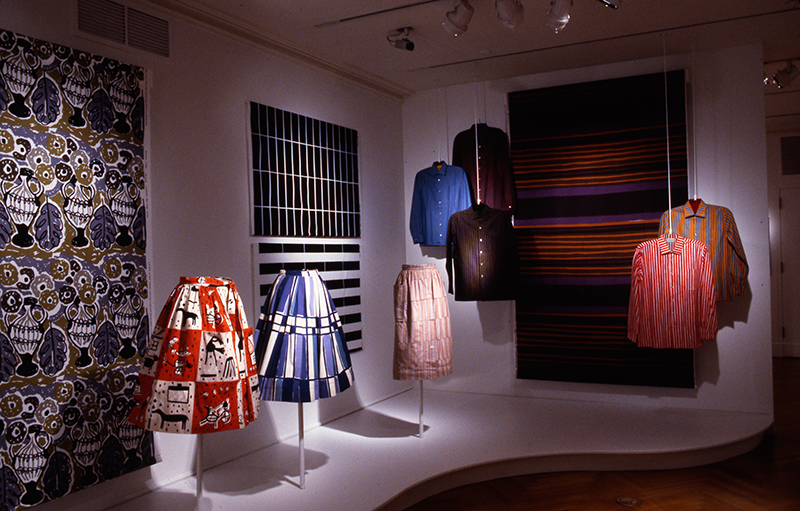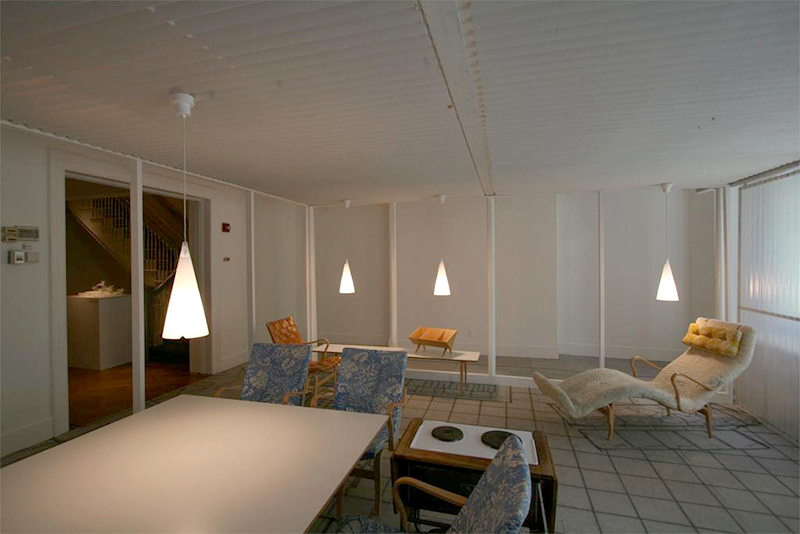Bard Graduate Center Gallery: expanding the art historical canon

Waterweavers: The River in Contemporary Colombian Visual and Material Culture, Installation view; 2014. Image and original data contributed by Bard Graduate Center Gallery
To mark the release of 2,600 images from Bard Graduate Center Gallery in the Artstor Digital Library, Bard’s curatorial team discusses the institute’s history and the importance of its Gallery exhibitions for expanding conventional notions of the art historical canon.
Bard Graduate Center Gallery is recognized nationally and internationally for groundbreaking exhibitions that highlight new scholarship in the fields of decorative arts, design history, and material culture. These feature rarely seen objects, drawings – including architectural renderings – and other exceptional works of art. Our research-driven interpretation materials provide visitors with in-depth labels and contextual photographs, and we translate curatorial thinking into display strategies that incorporate new media and film. As a non-collecting institution, our exhibitions are loan-based, drawing on a range of public and private collections around the world, and are celebrated for introducing the public to work that has never before been on view, or that is seldom exhibited in New York for reasons of rarity, accessibility, or condition. Located on West 86th Street on Manhattan’s Upper West Side, the Gallery occupies three stories of a landmarked townhouse, creating an intimate environment for engaging with stimulating ideas and objects, from the simplest artifacts of everyday life to the most extraordinary and exquisite artistic creations.
Exhibitions in the Gallery strive to expand the art historical canon and reflect our multidisciplinary interests and approaches. Past topics have ranged from the intersection of politics and textile design in Wearing Propaganda: Textiles on the Home Front in Japan, Britain, and the United States, 1931–1945, to the material culture of the American circus in Circus and the City: New York, 1793–2010. Some exhibitions have focused on understudied designers, media, or materials, while others, such as Waterweavers: The River in Contemporary Colombian Visual and Material Culture, and Cast Iron from Central Europe: 1800-1850, explored the relation of objects and national identities. Still others, such as Knoll Textiles, 1945–2010 and Georg Jensen Jewelry, have focused on corporate design history.

William Kent: Designing Georgian Britain, Installation view; 2013-2014. Image and original data contributed by Bard Graduate Center Gallery
Bard Graduate Center’s image collection in the Artstor Digital Library reveals several essential aspects of our Gallery program and how it addresses topics in the history of design, decorative arts, and material culture that are frequently overlooked. The Gallery’s first exhibition in 1993, Royal Road: Berlin and Potsdam in KPM Porcelain and Painting, 1815-1848, explored how the Royal Prussian Porcelain Manufactory reflected rapid changes in architecture, landscape design, and the decorative arts through porcelains used as diplomatic gifts. The 2008 exhibition, English Embroidery from The Metropolitan Museum of Art, ca. 1580-1700: ‘Twixt Art and Nature, included extraordinary embroideries from the Metropolitan Museum of Art from a period in England when this art form reached its apogee. Most of these exquisite textiles are rarely on view due to their fragile condition and vulnerability to the effects of light. William Kent: Designing Georgian Britain in 2013 likewise included exceptional examples of Kent’s furniture and designs from private collections, many never before seen outside of the country homes of Great Britain.

Marimekko: Fabrics, Fashion, Architecture, Installation view; 2003-2004. Image and original data contributed by Bard Graduate Center Gallery
As a non-collecting institution, Bard Graduate Center Gallery exhibitions also have the latitude to take on a wide range of subjects. Focus Projects, curated by faculty and postdoctoral fellows in collaboration with graduate students, have examined subjects as diverse as the design and circulation of American Christmas cards, the role of actresses as fashion setters in the Belle Époque, the fractal images of Benoit Maldelbrot, the coca bag or chuspa—a component of Andean culture for the past 1,500 years—and the personal computer, an element of modern life for the past 50 years. A seminal exhibition in 2000, Women Designers in the USA: 1900-2000, did much to reconsider and rehabilitate the role of women designers working in the United States in the 20th century. Six years later, Sheila Hicks: Weaving as Metaphor was the Gallery’s first exhibition devoted to a contemporary artist and brought together all of Hicks’ woven miniatures for the first time.
Exploration of the art and design of the Nordic world—Sweden, Denmark, Finland—is another central focus. Marimekko: Fabrics, Fashion, Architecture explored the corporate design history of the Finnish brand that did much to shape postwar design and fashion across the globe. Demonstrating the Gallery’s commitment to innovative exhibition design, the 2007 exhibition, Bruno Mathsson: Architect and Designer, featured an installation by Swedish designers Anna von Schewen and Björn Dahlström that recreated a room from the Mathsson-designed Frösakull glass house (1960) with furniture that visitors could sit on to actually experience the pleasure of relaxing in a Mathsson chair in a Mathsson-designed room.
View the collection in the Artstor Digital Library.

Bruno Mathsson: Architect and Designer, Installation view; 2007. Image and original data contributed by Bard Graduate Center Gallery